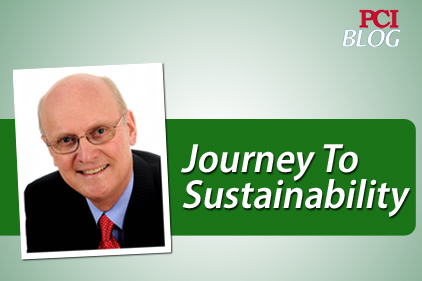What Can the Coatings Industry Learn From the Agrochemical Industry?

This month, the PCI sustainability blog is going outside the realm of paint to learn from a completely different industry that has relevance for all companies in the coatings industry. The lesson comes from a founding member of The Sustainability Consortium (TSC) that has boldly announced a significant change to its business model, which embraces all three pillars of Sustainability.
Syngenta is one of the largest agrochemical and seed companies in the world, with sales of $14 billion. It has a major presence in all continents including North and South America. The company traditionally manufactures and markets agrochemicals used by farmers to help control weeds, insects and molds. It has in recent years developed a range of seed products, recognising the synergistic relationship between agrochemicals and seeds businesses at a time of significant technical change in both families of products. The agrochemical and fertiliser industries have been criticised for many years by a number of NGOs who favour ‘organic’ methods of cultivation that do not leave synthetic chemical residues in the soil and in the agricultural products that find their way into consumer markets.
Over the last three years, Syngenta has been developing its sustainability strategy. It has concluded that the most effective way of increasing the supply of food to meet the ever-increasing population of the world is to increase the productivity of farmers. In September 2013, Syngenta launched its new direction in the world financial press and announced its revised mission to educate farmers to be more productive. Put another way, Syngenta is looking to teach its customers to use LESS of its products, not more!
The company sees the farmer as the change agent central to:
- increasing food supply while minimising waste;
- planning greater diversity of planting to reduce degradation of farmland; and
- improving health and reducing poverty.
While many of the programmes to deliver on these ambitious goals are not yet in place or even clearly defined, Syngenta has committed itself to follow this path forward and deliver what it can in the medium term, using the technologies and R&D resources at its disposal.
What is clear is that Syngenta is prepared to change its business focus and, as a result, the direction of its R&D efforts. According to the new business model, the company will increase its focus on understanding the impact of its technologies downstream, improving them in ways that will make their existing products more active, and then help downstream customers streamline their own processes to make best use of the Syngenta products and services on offer. In this model, training and consultation become key to business success for Syngenta and the farming community, and a potential source of increased competiveness and profit to both communities.
Syngenta CEO, Mike Mack, was reported in the Financial Times of London as saying that his company’s new strategy was ‘not necessarily intuitive’. Senior executives in the coatings industry might feel the same?
Comparing the language of the agrochemicals industry with that of coatings, the ‘change agent’ role played by the farmer in the agrochemical industry becomes that of the coatings applicator/decorator in the coatings industry. The goal of ‘increased activity’ in the agrochemical industry becomes ‘enhanced functionality’ in coatings. Syngenta’s drive to teach farmers to use less is translated into coatings products and services that, for example:
- create the desired coating performance in a reduced number of coats;
- teach customers to only buy as much as they need and no more; and
- promote and, if necessary, fund recycle programmes to ensure that waste paint products are not landfilled or incinerated but do find an end use valuable to society.
As far as coatings are concerned, one can immediately see a shared vision of the way forward between Syngenta and AkzoNobel; a company whose CEO, Ton Büchner, has stated publically that ‘Sustainability IS his business’. While AkzoNobel is not alone on this journey, there are many companies in the coatings industry that have a long way to go to pursue sustainable development!
In a recent presentation from Syngenta at the Sustainability Leaders’ Conference in London, the company offered the following advice points based in its own experience. They are:
- You need a bold ambition that builds on where your business can make a difference;
- Don’t try to invent a sustainability strategy, but work on the sustainability of your strategy;
- Translate a top-down vision into bottom-up commitments;
- Implement measures that are relevant to the business and meaningful to society; and
- Don’t be afraid if you do not have everything sorted out from the beginning.
In 2014, I look forward to seeing many more companies in the coatings industry following this model and working ‘on the sustainability of their strategy’. This approach is not only positive for society as a whole but also ensures a sustainable and profitable future, particularly for those companies that are early adopters.
Happy holidays, and a more sustainable New Year to all.
